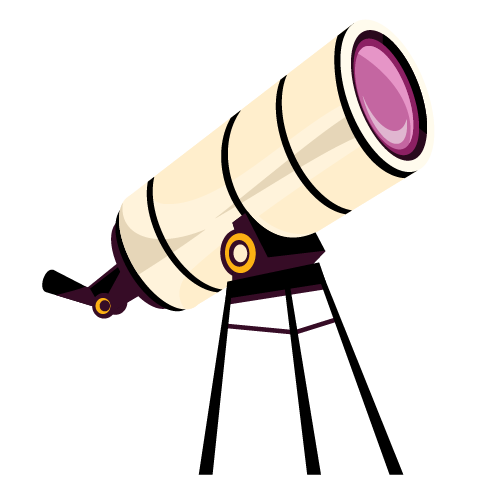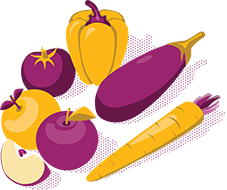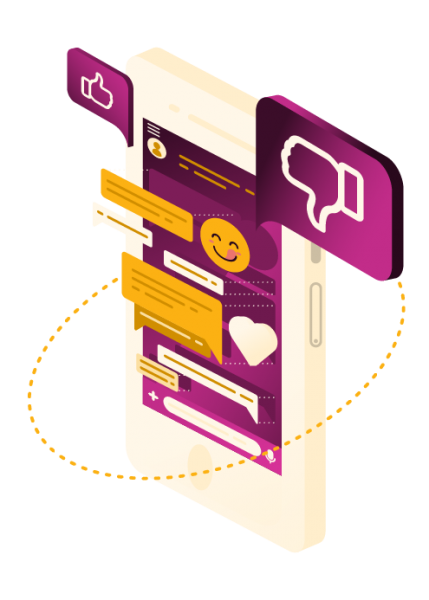Curious Minds
At Georgia Southern, we believe curiosity is the foundation of knowledge. In our Curious Minds section, faculty, staff and alumni from Eagle Nation offer their expertise and insights on a broad spectrum of timely topics. We hope you enjoy their perspectives.
The James Webb Space Telescope, a New Window to the Universe and Humankind
College of Science and Mathematics
Our perception of humankind as part of a broader cosmic stage has been deeply reshaped by audacious acts of exploration accomplished by daring men and women. Nomad tribes wandered newly discovered lands, and one small step of a man marked the first footprint in the dusty surface of the moon. Both events left profound etches in the book of human history. Our most recent exploration endeavor is the James Webb Space Telescope. Located far from the blurring effects of the Earth’s atmosphere, the observatory is designed to help us explore new frontiers in space and back in time with unprecedented detail.
The large size of its mirror and the high sensitivity of its detectors will allow Webb to gaze at extremely faint and distant galaxies. Since light travels at a finite speed, the farther a galaxy is from Earth, the longer its light has taken to reach us and the older that light is. Webb will detect galaxies at such distances and they will be observed in the state they were billions of years ago. Astronomers aim to understand the processes that assembled the earliest galaxies in the universe.
Webb is equipped with infrared detectors to reveal stellar birthplaces, hidden to other visible-light sensitive telescopes by the dense and opaque clouds of gas and dust where stars are formed. Webb will image with unprecedented detail the stars and their planets at different stages of formation, bringing us closer to the cosmic origins of our home planet.


In the last few decades, we have come to recognize the great abundance of planets around other stars. The spectrometric sensitivity of Webb’s instruments will reveal the chemical composition of the atmospheres of these exoplanets. We will be able to investigate if there are planets with atmospheres comparable to that of the Earth and evaluate the probability of the existence of life in those worlds.
Expectations are high, and if the observatory performs as planned, our appreciation of the universe, humankind and life in general as a result of cosmic evolution, will be profoundly transformed in the next two decades.
— Jorge Villa-Vargas, Ph.D., Lecturer, Department of Physics and Astronomy
Okay, Boomer?
Waters College of Health Professions

It is estimated that there are approximately 54 million older adults, those aged 65 and older, residing in the United States representing 16 percent of our current population. Experts predict these numbers will dramatically increase, almost doubling to 94 million by the year 2060. This growth is largely driven by the Baby Boomer Generation, those persons born between 1946-1964. Baby Boomers are the second-largest generation age group second only to their children, the Millennials. By 2030, all Boomers will be 65 or older. Census estimates indicate that by 2035 for the first time in the history of the United States older adults will outnumber children. The disproportionate growth of our aging population is thought to be due to societal changes to family structures, people living longer, and having fewer children.
There are concerns that our current health care system is ill equipped to meet the needs of our aging population due to a lack of allocated resources as well as a massive shortage of qualified health care providers. Economic burdens will be placed on Social Security, Medicare and other public health resources. Furthermore, a significant economic burden will also be placed on the older adult in the form of gaps in insurance coverage and lack of resources for long-term care. These multifactorial issues create inequalities leading to health disparities.
Ageism is also a huge concern and impediment to older adults accessing quality health care. While this issue has been well established in studies, it became more apparent as a result of the COVID-19 pandemic and heightened media coverage.
As influential members of the health care community we are uniquely positioned to help improve the lives of older adults and positively influence the necessary changes for health care reform through awareness and political advocacy. As educators helping prepare the future health care workforce, we should ensure our students are expertly equipped to care for all generations by assessing gaps in our curricula related to vulnerable populations such as older adults.
— Alan W. Skipper, DNP, APRN, FNP-BC, PMHNP-BC, Assistant Professor of Nursing
Researchers Study Ways to Get Kids to Eat Healthier
Jiann-Ping Hsu College of Public Health

Unfortunately, the majority of what our children are eating comes from unhealthy and poor-quality ultra-processed foods high in sodium, sugar and fat. Some examples include soft drinks, hot dogs, packaged cookies, crackers, salty snacks, cakes and others. Although practical and easy to eat, these foods have added ingredients including salt, fat, sugar, artificial colors and preservatives, many of which have been linked to “promoting” addictive pathways in the brain. Ultra-processed-based food diets contribute to hypertension, cardiovascular disease, diabetes, and obesity later in life due to their high sodium, high fat and sugar contents and lack of healthy nutrients. Up to 85% of children less than five years of age do not meet their daily recommendations for fruit and vegetable intake. This is particularly pronounced in Black populations, which also are more vulnerable to cardiovascular disease and obesity.
Like we teach our kids to read and write, we must teach our kids to eat healthy fresh vegetables and fruits, and as a society, and as parents we are failing to do so. As a mother of two kids under five years of age, I have personally witnessed the lack of opportunities to offer our children fresh vegetables and fruits in our culture. Kids’ menus at restaurants and fast-food chains often lack vegetable offerings. Some parents and childcare programs offer ultra-processed foods before fresh fruit or vegetables. Our environment is populated by misleading marketing strategies of ultra-processed foods: veggie strips, organic fruit snack gummies, etc… Childcare programs offer ultra-processed snacks (crackers, pretzels, veggie strips, chips, high-sugar cereal) instead of fresh vegetables and fruits.
But why is this happening? We have some ideas, but we really don’t know. This is why an amazing team of faculty and students from the Jiann Ping Hsu College of Public Health and the Waters College are working toward identifying barriers and facilitators to offer fresh vegetables and fruits in 14 childcare programs and homes in southeast Georgia through our project, Pass the Peas. With our findings, we hope to develop an adoptable, scalable intervention that will help mitigate the obesity burden in our young vulnerable children.
— Ana Palacios, Assistant Professor of Health Policy and Community Health
How do you Find Books to Bridge the Gap between Students’ and Teachers’ Backgrounds?
College of Education

We all enjoy watching movies and shows that we can connect with – stories that echo places, people, and events in our own lives. Similarly, we know that students who connect their experiences and “funds of knowledge” with a book will read with greater enthusiasm and comprehension.
Imagine though that you are a teacher, like many others, whose life is very different from those of your students. Perhaps you teach in a military community but have no experience with the armed forces. Or maybe many of your students are being raised by grandparents but you were not. How can you choose books that will connect with your students’ life experiences – without alienating them with inaccuracies or stereotypes?
Your experienced local teacher colleagues are, of course, great resources. Additionally, you might look to book awards and reviews or academic publications. However, if you teach in Vidalia, does a book critic or college professor really know much about onion farms and farm workers?
We suggest consulting your local “authentic insider readers” – the people who have lived the lives depicted in the books you seek. Why not collect a small set of books you think might align with your students’ experiences and systematically ask your students and parents to evaluate them?
By sharing potential books formally or informally during extracurriculars, parent-teacher meetings, and unstructured moments during the school day – and systematically gathering responses and comments – teachers can make better-informed choices about which books to add to their classrooms.
We have found this process revelatory as it has allowed us to see books through the eyes of life experiences we do not share. Our authentic insider readers have often lauded books we overlooked and criticized elements of books that we praised.
Of course, no book will ever be unanimously loved and supported. Nonetheless, teachers can find books that are more likely to connect with their students and serve as effective instructional tools by seeking the input of readers who have lived the books they seek.
—Scott Beck, Ph.D., Professor of Teaching Culturally and Linguistically Diverse Students and
Alma Stevenson, Ph.D., Professor of Literacy Education, The College of Education
Sources: Beck, S. A, & Stevenson, A. D. (2015). Migrant students scaffolding and writing their own stories. Voices from the Middle, 23(1), 59-67.
Stevenson, A. D., & Beck, S. A. (2021). “It’s Almost as if I Wrote This”: Transnational Migrant Farmworkers Read “Their” Lives. Journal of Children’s Literature, 47(2), 8-21.
What’s Causing Inflation Around the World?
Parker College of Education

Currently, the U.S. is experiencing the highest inflation of the past 40 years. Over the past year, food prices increased 10.4%, and gasoline price increased 59.9% before declining over the past 2 months. Inflation is defined as a sustained increase in the average price level, with the devaluation of the dollar and the stunting of long-term growth potential being the consequences.
Devaluating currency designates a loss in purchasing power; if you have $100 in income to purchase gasoline for your car and gas currently costs $1 per gallon then your $100 has the power to purchase 100 gallons of gas. But if the price of gas increases to $1.25 per gallon, then that same $100 now has the power to purchase only 80 gallons of gas.
In times of inflation people will dip into their savings and reduce their investments, thereby stunting long-term growth potential. Most people will always expect some inflation and only large changes in inflation cause people to alter their consumption.
Many factors are responsible for inflation. COVID caused supply chain shortcomings and a release of pent-up demand, both major catalysts of inflation. Inflation happens whenever there’s too much demand for too little supply. During the early days of COVID, with people stuck at home, there was an estimated accumulation of $2.5 trillion in excess savings.
The demand is only one side of this equation. Economies have experienced disrupted supplies for many products. Overseas factories were closed or considerably slowed down their production. World events also contribute to inflation, Putin’s invasion of Ukraine contributed to this inflationary cycle as are some corporations who took advantage of the current situation to drive up prices and recorded profits in return.
Many look to the Federal Reserve to lower inflation. When the FED increases interest rates borrowing money costs more which indirectly influences how much people are spending. In March of 2022, FED Chair Jerome Powell admitted during a congressional hearing, that the pandemic was totally unprecedented, and the FED was slow to respond, even with many Wall Street investors arguing against the FED raising interest rates.
Finally, consumers also need to be aware of “shrink-flation” where companies hide price increases by reducing the size of their products. If you’re buying a non-specific sized product, a bottle of Gatorade, instead of a gallon of Gatorade, check the amount, 19 times of 20 it will be smaller than previously.
— Anthony G. Barilla, Ph.D., Associate Professor of Economics
Navigating the Gatekeepers on Social Media
College of Arts and Humanities
Marshall McLuhan famously proclaimed that, “the medium is the message,” and that concept has played out in interesting ways in an age of social media.
In traditional media like television and magazines, there are clearly defined “gatekeepers” who decide what topics are and are not discussed. This decision is powerful because topics covered in the news change how audience members spend their mental and emotional energy.
Platforms from Facebook to TikTok lack traditional gatekeepers that determine what topics we discussed in formal, traditional media. Instead, algorithms and our own preferences shape our
information experience.
Social media programmers make up sets of rules, or algorithms, that sort information for us on our social media platforms. Algorithms can determine if we see a post first, last, or not at all. In a free social media platform, your attention is the product being sold to advertisers. So, algorithms might give you more posts that you like, but they could also choose to give you more posts that make you angry if those anger-inducing posts keep your attention and get you more involved in the platform. Social media programmers also change algorithms all the time, so you will never quite know what the rules are that shape your social media experience.
However you choose to engage in social media, remember the power is in how you choose to use the platform. You can resist allowing the platform to manipulate what you do and do not see (You can change the settings for how your feed is organized, for example). You can think critically about which accounts to follow on a social media platform. If the medium is the message, we should all become more literate in what each social media platform is telling us.
— Lauren Bayliss, Ph.D., Associate Professor of Public Relations

Artificial Intelligence: Is the Hype Worth the Byte?
Allen E. Paulson College of Engineering and Computing

Artificial Intelligence, or AI, emerged in 1956, and is 60-plus years old. There is a lot of controversy surrounding AI — from Facebook developing chatbots that communicated in their own language or a Google engineer claiming Google had sentient AI technology.
Keep in mind, no predictions of the future have come true: not George Orwell’s “1984,” not planes falling from the sky in December 1999 due to Y2K, nor even those hoverboards in “Back to the Future 2.” The same is true with AI doomsayers.
Now that ChatGPT has emerged, many say this will put large sectors of the economy out of work. Consider this: they’ve been claiming computers and AI were going to replace doctors for well over a decade, but they haven’t and won’t anytime soon. Computers and AI give doctors another input into the decision-making process, thereby augmenting and improving the medical decision-making process, not replacing it. Programmers, doctors and lawyers are not going anywhere anytime soon; however, AI technology will make these professions more efficient and accurate by supporting and augmenting, not by replacement.
We will soon see AI integrations into our daily software products like Word, Excel and our development and programming environments. In fact, we already see them. GitHub Copilot has been extending the performance and efficiency of programmers since its inception.
There are concerns over AI technology, such as face and speech recognition, being used against the public but all technology is ripe for exploitation and abuse. Moving forward, ethical considerations as AI technology advances must be considered as well as the ethical implications of implementing technology.
The field of AI is not replacing humans in the near future. Human brains are faster and contain more neurons and connections whereby even the biggest and fastest computer on the planet could not handle the processing required to run the human body and all its functions.
For example, consider the physics responsible for measuring the trajectory and landing position of a ball. This requires detailed knowledge of gravity, physics, angles, trigonometry, and calculus; however, your puppy can catch a ball without considering all these complications. A frisbee computation is even more complex but again, Fido catches the frisbee with ease all while recognizing faces, voices, and its environment. In over 60 years we can’t make AI as smart as a dog, maybe in 50 more we’ll make it as smart as a cat.
— Hayden Wimmer, Ph.D., Associate Professor of Information Technology
